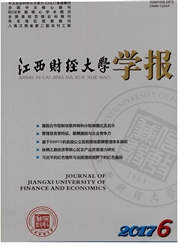

 中文摘要:
中文摘要:
利用DEA评价模型,从"低碳集约化"的全新视角,考察和测度了2011年鄱阳湖生态经济区土地利用效率及其改进。结果表明,在生态与经济协调发展理念的指引下,鄱阳湖生态经济区土地低碳集约化利用效率整体表现较为理想,区内多数县(市、区)兼顾了土地资源的集约化利用和低碳化利用。但是,区域土地面积、公路总里程、社会就业人数等投入的冗余程度较高,地区生产总值、高新技术产业主营业务收入、资质级建筑企业总产值的产出不足问题较为突出,土地低碳集约化利用效率尚有较大改进空间。为此,建议按照区域功能定位的要求,将用地结构优化与产业结构调整相结合,合理规划用地规模和要素投入,倡导低碳经济发展模式,推动土地开发利用方式从粗放外延式转向低碳集约化转变。
 英文摘要:
英文摘要:
By employing DEA evaluation model, this paper inspects and measures the land use efficiency and its improvement in Poyang Lake Eco-economic Zone in 2011 from the new perspective of low carbon and intensification. The results show that under the guidance of the concept of harmo- nious development of ecology and economy, the efficiency of low-carbon and intensified land use in Poyang Lake Eco-economic Zone is on the whole rather satisfactory, and most counties (cities and districts) within the zone have paid equal attention to the intensified use and low-carbon use of the land resources. However, the input in regional land area, total highway mileage and social employ- ment has a higher level of redundancy; such issues as regional GDP, the main business income of the high and new technology industry, and insufficient gross output of the qualified construction enterpris- es are rather prominent; the efficiency of low-carbon and intensified land use in Poyang Lake Eco-e- conomic Zone still has a large room for improvement. Therefore, this paper puts forward the follow- ing suggestions: in accordance with the regional function location requirements, the structure optimiza- tion of land use should be combined with the adjustment of industrial structure, the scale of land use and the factor input should be reasonably planned, the low-carbon economic development mode should be promoted, and the method of land exploitation and utilization should be pushed to change from extensive mode to low-carbon and intensified mode.
 同期刊论文项目
同期刊论文项目
 同项目期刊论文
同项目期刊论文
 期刊信息
期刊信息
